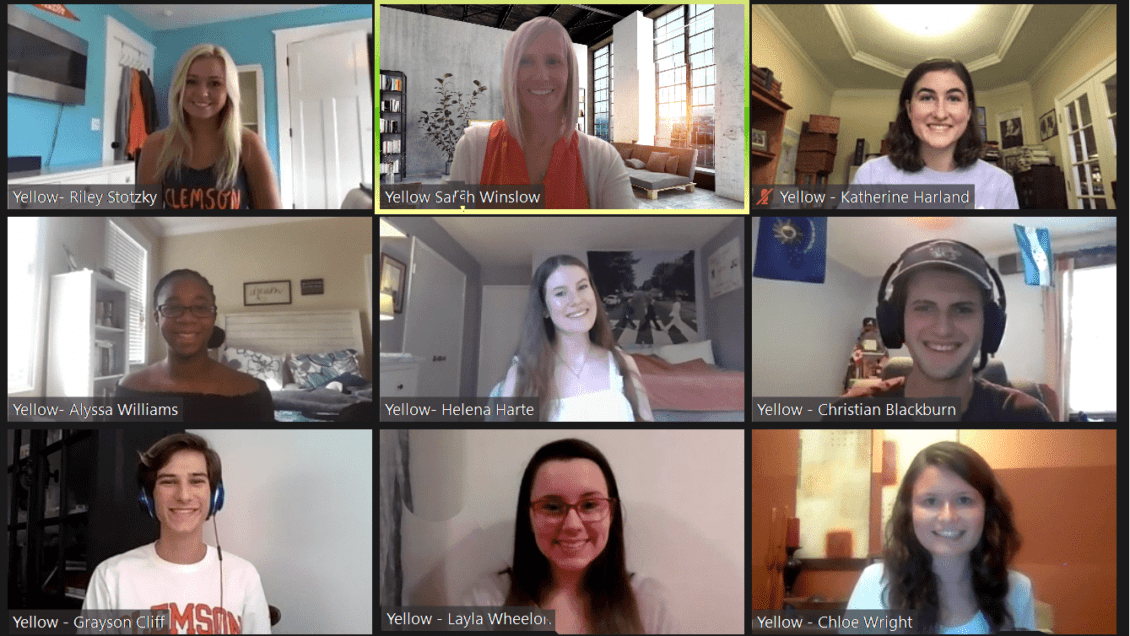As Clemson University students continue to settle into in-person instruction, Sarah Winslow and fellow faculty members transitioned their class structure, many admitting that virtual learning had been engaging and anything but distant.
“I knew what I experienced on the first day, and what I was hearing from some of my colleagues, and that was how engaged the students were and how it was good to see them,” said Winslow, senior associate director of the Clemson University Honors College and director of the National Scholars Program. “We worked hard over the summer to make sure the online start provided students with that connection to faculty and each other.”

During the online start, many of the faculty found the online classroom environment more immediately friendly. Maybe they saw someone’s pet on video or heard someone calling from the background. Participants had the opportunity to see each other in their own environments – getting to know each other in a completely new way.
By the time in-person classes started, many of the students and faculty felt they already knew one another. With a student to faculty ratio of 16:1 and average class size less than 30, it made for an an easy changeover.
The use of video conferencing tools, and the capability of creating breakout sessions with smaller groups for discussion, and then bringing them back to join the larger class minutes later, is not something that can be easily achieved in a traditional lecture hall and has created another tool for future use, regardless if classes are held in-person, as part of a hybrid model or all virtual.
Brad Putman, associate dean for undergraduate studies in Clemson’s College of Engineering, Computing and Applied Sciences, admits the start of his Pavement Design class was anything but solitary, and preparation was key.

At the beginning of the year, nine guest engineers – all Clemson alumni from the Glenn Department of Civil Engineering – joined Putman’s class for a panel discussion. The format of the class meeting consisted of a series of five small group meetings. The students were divided into nine groups of five to six students, and each group had individual meetings with five of the guests. Each meeting was nine minutes long, and guests rotated to a different group for each meeting. There was little wasted time and more engagement in this virtual class.
“I get excited about these types of activities that get students talking and working with each other in a somewhat ‘non-traditional’ way compared to what people imagine when they think about engineering design classes,” said Putman. “These are even more exciting when we engage practicing engineers, especially Clemson alumni. The conversations become that much more genuine for the students and our alumni who may be future employers or colleagues of our students. In this new setting, our alumni are excited to engage even more with the department and University.”
Video conferencing tools have presented opportunities to conduct classes in new ways. These techniques may continue to be used from time to time even as classes have moved to in-person instruction. Putman now has another tool to use, what he calls his “speed-dating” approach to panel discussions, and Winslow will continue to host her virtual open office hours. On occasion you might see her young children dancing across the room, putting on an impromptu performance for students during those office hours.
Get in touch and we will connect you with the author or another expert.
Or email us at news@clemson.edu

